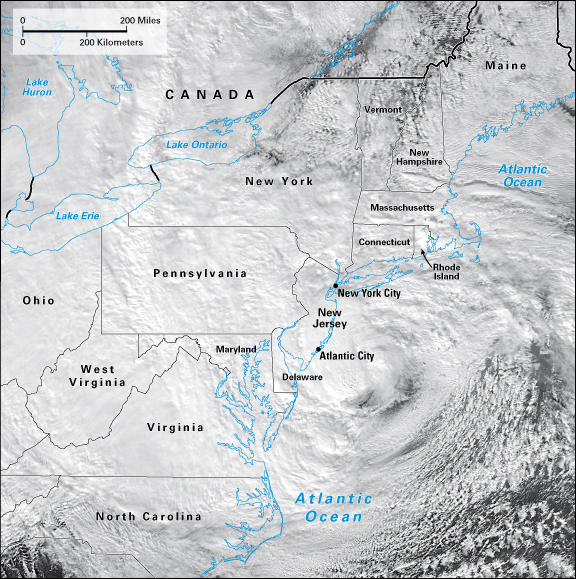Government Report: Climate Change Has Moved “Firmly into the Present”
Wednesday, May 7th, 2014May 7, 2014
Climate change, once considered a distant threat, is currently affecting every region of the United States and every area of the U.S. economy, according to the 2014 National Climate Assessment. The report, released by the administration of President Barack Obama, was prepared by some 250 climate scientists working over several years. The report also emphasized that human activities–not the sun, volcanoes, or other natural factors–are the chief cause of the rise in average global temperatures during the past 50 years. President Obama used the publication of the report as the launching point for a media campaign to arouse public support for government action to reduce emissions of greenhouse gases, linked by nearly all scientists to climate change.
The assessment, which is the third such review, is the first to is the first to comprehensively track the effect of climate change on every part of the United States. According to the report:
- In the Northeast, heat waves, heavy downpours, and sea-level rise pose growing challenges to many aspects of life. Infrastructure, agriculture, fisheries, and ecosystems will be increasingly affected. Since 1958, the amount of precipitation falling on this region during the heaviest rainstorms and snow storms has jumped 71 percent, with extremely wet weather expected to increase by an additional 70 percent by 2100.
- In the Southeast, sea-level rise poses widespread and continuing threats to the region’s economy and environment. Extreme heat will affect health, energy, agriculture, and more.
- In the Midwest, the increase in heavy downpours and flooding is expected to continue, causing erosion, declining water quality, and damage to transportation, agriculture, human health, and infrastructure. Heat waves are expected to become more frequent.
- In the Southwest, increased heat, drought, and insect outbreaks have increased wildfires. In 2011, New Mexico, Arizona, and Texas had the largest wildfires in their recorded histories. The current drought in the Western States represents the driest conditions in 800 years. Declining water supplies, reduced agricultural yields, health impacts in cities due to heat, and flooding and erosion in coastal areas are additional concerns.
- In the Northwest, sea-level rise, erosion, flooding risks to infrastructure, and increasing ocean acidification post major threats. Increasing wildfires, insect outbreaks, and tree diseases are currently causing widespread tree die-off.

Many scientists believe that climate change is resulting in ever-more extreme storms, such Hurricane Sandy in October 2012. In this NASA satellite image overlaid with a World Book map, the center of the storm is shown approaching the New Jersey coast. (World Book map; image provided by National Aeronautics and Space Administration)
The report notes that there is still time to act to limit the amount of change and the extent of damaging impacts. Many states and cities as well as some corporations, it said, are beginning to incorporate climate change into their planning.
Additional World Book articles:
- Intergovernmental Panel on Climate Change
- Kyoto Protocol
- The Great Meltdown (a Special Report)
See also:



